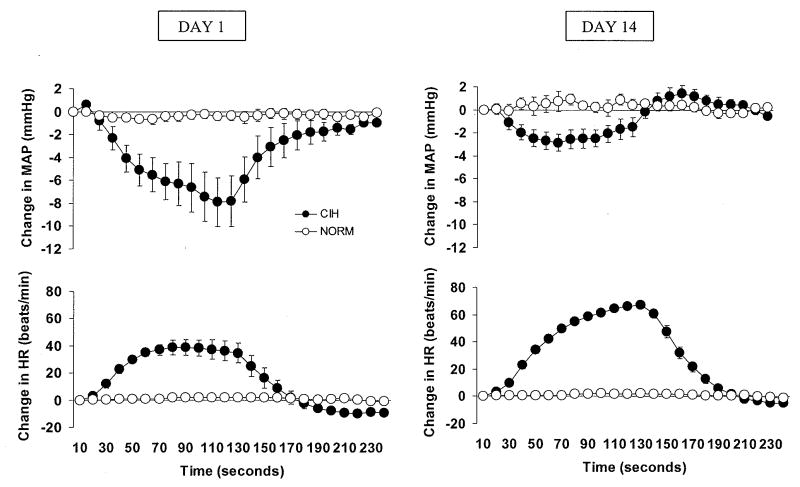Figure 1.
On the first day of chronic intermittent hypoxia (CIH) exposure (left panel), hypoxia episodes caused decreases in mean arterial pressure (MAP) and increases in heart rate (HR) (filled circles). During the same sampling intervals, MAP and HR in normoxic control (NORM) rats remained stable (open circles). On the 14th and final day of exposure (right panel), intermittent hypoxia episodes caused decreases in MAP that were smaller and increases in HR that were larger than those observed on the first day of exposure. During the same sampling intervals, MAP and HR in NORM rats remained stable. For each rat, we calculated a daily average of the 10-second binned values for HR and MAP during the 180 individual episodes of hypoxia in CIH rats and corresponding normoxic periods in NORM rats. Composite responses were determined by averaging each animal's mean value for each time point across all rats in a given experimental group.

